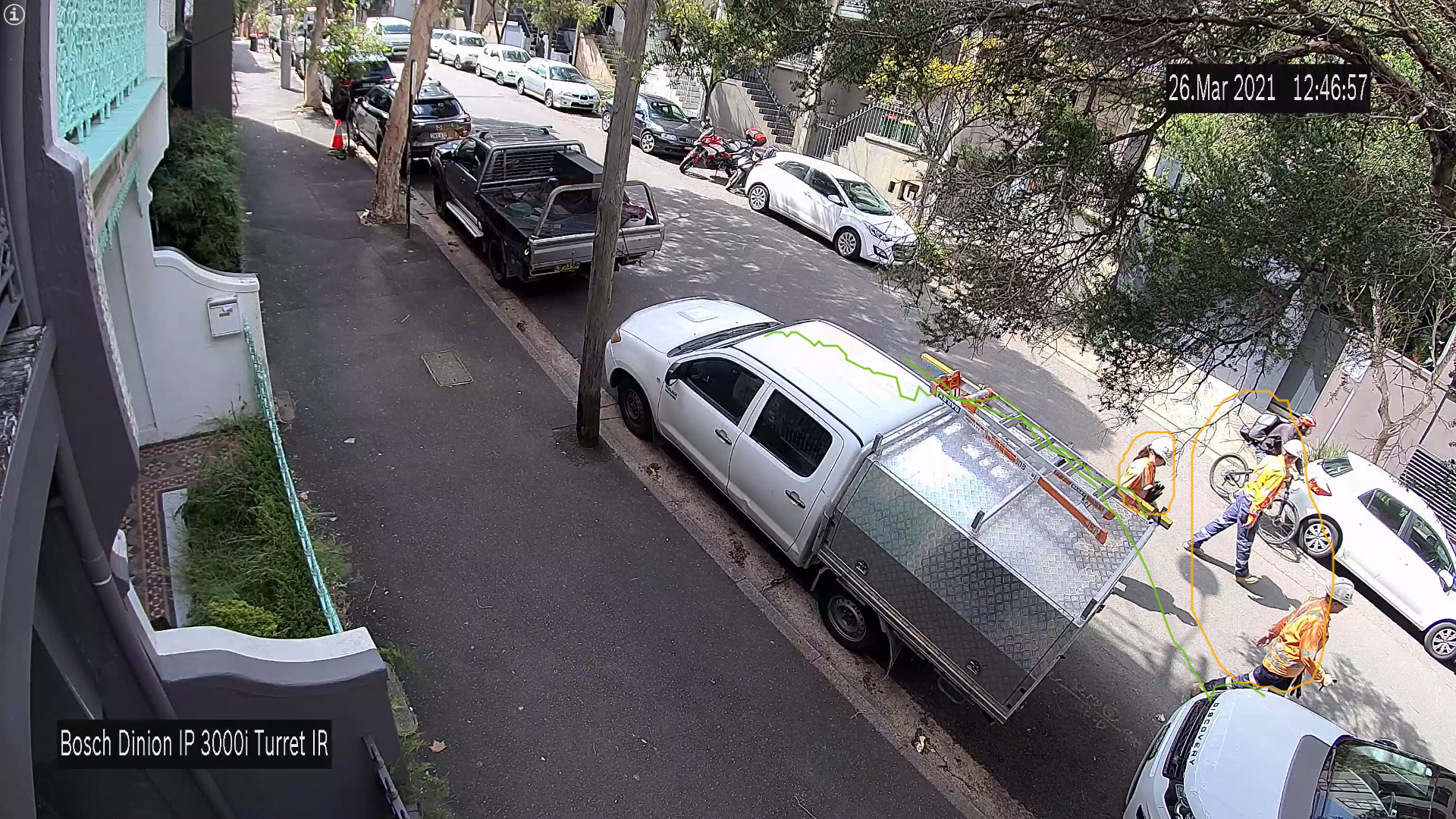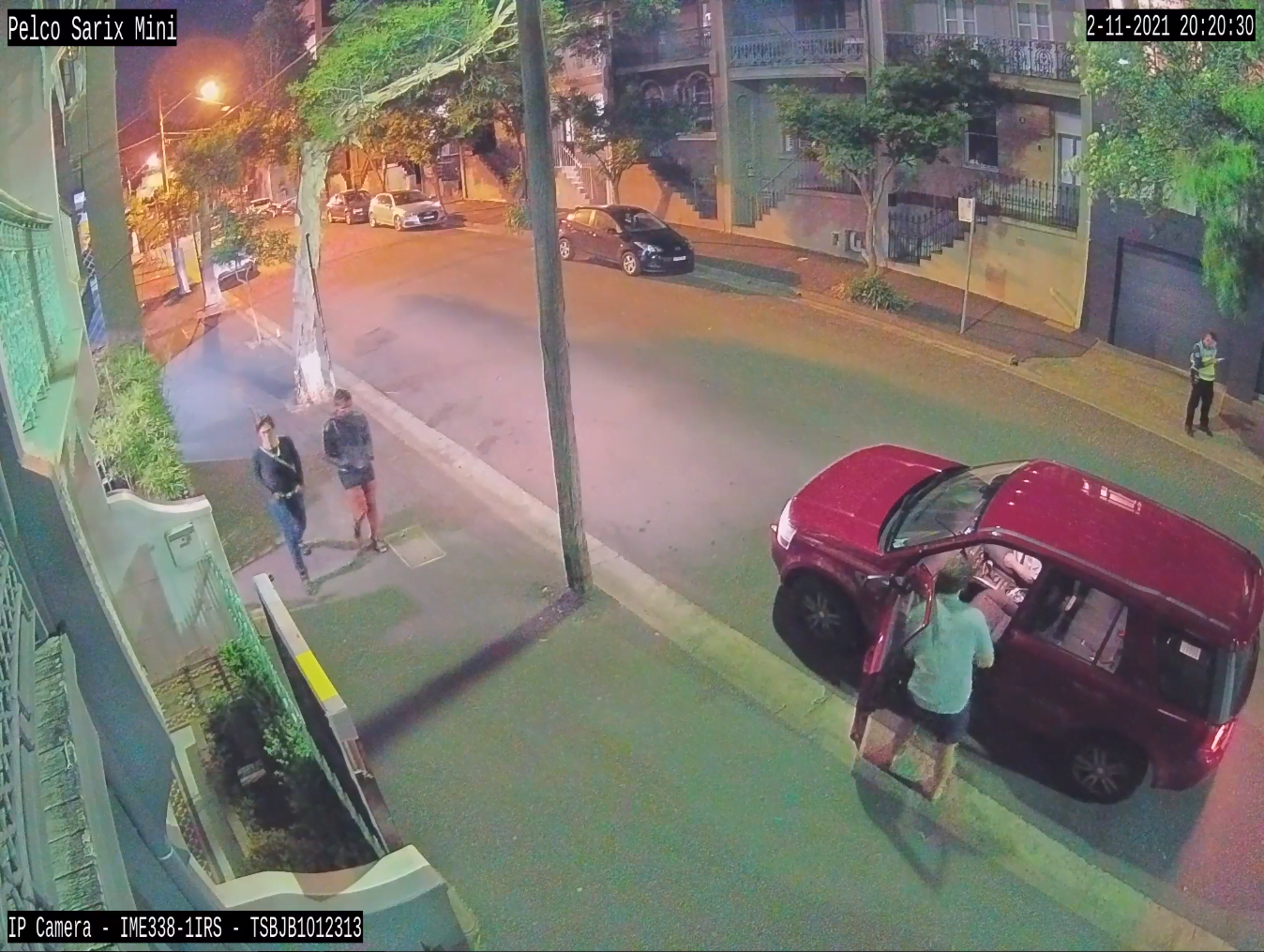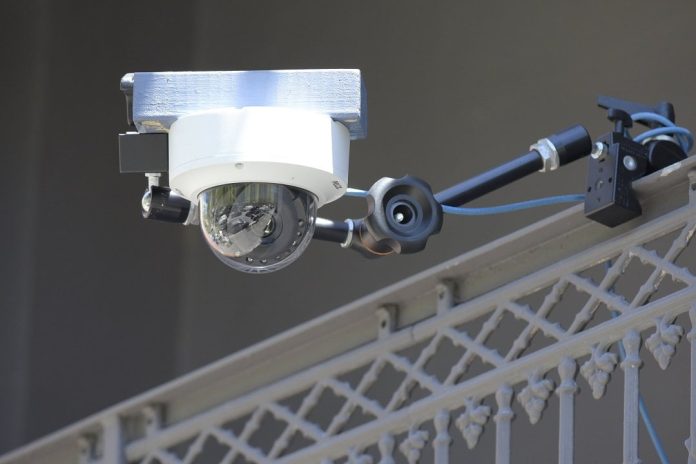Pelco Sarix Mini Dome Review
♦ Pelco Sarix Mini Dome Review – Pelco’s IME338-1IRS is a 3MP Sarix-enhanced indoor IR dome camera with a motorised 2.8-8mm lens, WDR of up to 130dB, IK10 ratings against impact, 40 metres of IR, H.264 and H.265 compression options, integral gyro stabilisation, 3D noise filtering and enhanced tone mapping.
Pelco IME338-1IRS 3MP Sarix-enhanced indoor IR dome is a nicely built camera with a solid specification that’s designed for applications requiring higher performance and extra reach. It’s been a while since we tested a Pelco Sarix camera and first impressions are of excellent lens performance, great colour rendition – even in fading light – and a particular strength in variable light, to the point we’d judge this Pelco dome to offer one of the most natural and balanced images we’ve seen in the last couple of years.

Given the camera’s ability to handle challenging scenes incorporating strong light and deep shade, it comes as no surprise to find the Sarix Mini is unusually capable against backlight. Something else that’s pleasing is the very quick one-button autofocus – it’s around 2.5 seconds, which is great compared to cameras that yaw either side of the focal plane right when you need an ID.
The camera is built using cast alloy and poly and the design and execution are nicely done. Getting the camera open, tweaking tilt, finding a location for multiple fixings to suit SEN’s Magic Arm are all painless processes. The finish of this camera is high quality and lens tolerances are tight, with very little sign of chromatic aberration.
Camera Specifications
Let’s scoot through camera specifications before we take a look at camera performance. The IME338-1IRS has a ½.8-inch progressive scan CMOS sensor, a resolution of 3MP, and a 2.8-8mm focal length from its motorised lens, with an angle of view of 106 – 38.2 degrees horizontal, and a vertical angle of view of 77 – 28.7 degrees. Minimum scene illumination is 0.005 lux in colour, or 0.001 lux in monochrome, both at fairly creative 500ms settings. The camera delivers monochrome performance in complete darkness with its 850nm integrated 40m adaptive IR activated.
This camera features Pelco’s SureVision Technology (advanced low-light and WDR simultaneously, anti-bloom, 3D-noise filtering, and enhanced tone mapping), and there’s up to 130dB of wide dynamic range and the camera has gyro electronic image stabilisation. New advancements include 3D noise filtering, smooth response to illumination changes, and improved tone mapping to retain colour accuracy and overall image contrast. A Pelco enhanced analytics suite is integrated with a deep learning option.

Other features include signal to noise ratio around 60dB, integrated audio, auto gain control, automatic and selectable white balance, day/night, digital noise reduction, motion detection tracking, NDAA compliance, and compression options that include H.265, H.264, and MJPEG encoding with Pelco’s Smart Compression. Compatible with Pelco and third-party video systems, the Sarix Mini conforms with ONVIF Profile S, Profile G, and Profile T.
There’s power redundancy between PoE/PoE+ and 12 V DC and 24V AC designed to ensure continuous operation with unstable supplies. This camera supports Micro SD Slot for SDHC/SDXC card storage, has an operating temperature of –10 to 55C and a power consumption that’s 7.6W with a maximum of 12.95W. There’s a suite of protocols supported, including TCP/IP, UDP/IP (Unicast, Multicast IGMP), UPnP, DNS, DHCP, RTP, RTSP, NTP, IPv4, IPv6, SNMP v2c/v3, QoS, HTTP, HTTPS, SSL, SMTP, FTP, 802.1x (EAP), and NTCIP 1205, IGMP, TLS/TTLS.
Test Driving Pelco Sarix Mini Dome
We’re testing this camera on SEN’s Dell Optiplex 9020 server via a Netgear 108SP PoE switch on a 1Gbps local network and viewing via a BENQ LED monitor. There’s nothing else on the test network at the moment. We start out around midday with the camera mounted out front overlooking the street. I have the camera head tilted slightly down inside the clear dome bubble – this means when I zoom in, I’m tightening on a point about 10-12 metres from the lens.
It’s a bright time of day in late spring here in Sydney, and I can see immediately that this camera is going to have strong capability against backlight. I should point out that the camera settings are default with WDR activated. Looking through the scene at light and dark areas shows handling of variable light is good – overexposure appears non-existent. Zooming in, there’s very little in the way of chromatic aberration at this wide angle of view. Perhaps it’s 2 or 3 pixels wide – and you need to go pixel peeping to find it.


I can see from the first image that colour rendition is strong. The camera is managing to give a good sense of the deep blue of the sky at the far end of the street and showing white clouds, despite the fact there’s plenty of sun to contend with. I measure just under 72,000 lux on the street, which is typical for this time of year. Watching vehicles moving through the scene, they’re holding together well.
Something to point out from the get-go is that this is an internal dome camera. While it has a 2.8-8mm varifocal lens, which is ideal for street work, the camera is only rated IK10 for impact, not IP66/67 against dust and water. That makes Sarix Mini ideal for large covered internal applications, including stadiums, malls, railway stations, universities, airports, etc – applications that are going to have ambient illumination.


Looking at the scene I can see overall sharpness is good, and contrast is excellent. Things like colour rendition, sharpness, contrast and tone increase detail perception and increase depth of field, even when sensor resolution is comparatively modest – in this case it’s 3.1MP. I’m still at 2.8mm and I’ve got a view all the way down to the far end of the street. In the far distance it’s situational awareness only, but depth of field at wider angles of view is a good thing to have.
At this focal length on the street, I’m not getting fast-moving plates. Static plates aren’t a problem – I have them to about 15 metres and optical zoom pushes this out further, so long as they remain in the frame. Something the camera does excel at when it’s zoomed in just a touch – about 4mm – is face ID on the street when mounted at about 3 metres. It’s a definite forte.


The scene remains very bright and WDR performance is strong. There are none of the signs of too much work being put onto the image stream in backlight – that smudginess of shaded faces. It’s nice work from Pelco. A motorcycle goes by, and I don’t get the plate, but I do get the plate colour and plenty of detail of the rider’s clothing and shoes, and I note he’s not wearing gloves. I can see the make and model of the machine, as well as the rider’s accessories.
Something I notice when I’m zoomed in deeper is that as light levels are reduced by the closing aperture, there’s some impact on the images. I can’t decide whether there’s a hint of tone mapping as the camera engine works on the image stream or whether it’s shutter speed dropping back at the longer focal length.


Next, I zoom in deep and frame an area of interest at around 12 metres. There’s a lot of detail here that really shows the strength of a varifocal dome mounted in an elevated position. When I zoom in with this Pelco Mini I have seriously high levels of detail in the frame under close surveillance. The zoom and re-focus via the Pelco browser is quick but the process would be quicker in a VMS because each time I tweak I’m closing full screen to access the browser functions behind it. Face recognition, which was court admissible anyway, is even more revelatory under deeper zoom.
We’re now starting to get some shade creeping into this image – the usual deep shadows from the neighbouring 10-story towers are moving across the scene. Sometimes this change can throw a camera – it will expose for one side or the other. If the shaded side is preferred, there will be overexposure on the bright side of the street. At other times, exposing for the bright side renders the shade so deep it impacts on situational awareness.


The performance of this Sarix Mini Dome remains strong, and the scene is rendered evenly, considering the challenges of the lighting. I’ve still got faces and a lot of vehicle detail. I note that at 4mm, a focal length that gives me my street scene from side to side minus the house fronts, I’m getting that little bit extra depth of field – not only down the street, but across the road. In this case, I’m viewing a guy who’s probably 35 metres from the lens over the road in bright sunlight and I can see clothing, shoes, socks, skin tones, hair colour. At the same time, I’ve also got a slow-moving plate.
As the afternoon goes along, the scene’s fundamental characteristics remain the same, good depth of field, strong detail, and excellent colour rendition. At 3pm with the bulk of the scene in deep shade, a man crosses the road with the light behind him and the camera has no problem with court admissible identification – it’s good work again with backlight in a majority shaded scene.


By 5pm, the shadows have crossed the street completely and the light has evened out. By this time shutter speed has eased back a touch, so while I’m still getting walking and static faces, numberplates are less distinct, though I still have full detail of vehicles and I’m happy with general scene sharpness and colour rendition. There’s no trace of noise or artefacts.


A couple of hours go by, and the image gradually alters, but not in the way you’d think. Something that’s interesting is that the image on the monitor is so bright and colourful at 7.30pm that some performance vectors come as a surprise. What I mean by this is that the image looks so bright that evidence of a slowed shutter speed in the form of motion blur pose a visual contradiction. It’s only when I open the front door and look outside that I realise how dark it is.


At this point, I’m starting to lose any detail with moving numberplates but retaining moving faces, especially within 10 metres of the lens. When a motorcycle goes by I don’t have a plate, but I’ve got a lot of other information, including a good sense of clothing, helmet, bag over the shoulder, and other details.
Next, a pedestrian crosses the street, and I can see shoes, carried items, hair colour, clothing. Shortly after, the light has faded considerably and the Sekonic measures less than 20 lux under the camera, then under 10 lux 10 minutes later. Even as we move into full dark, I still have court admissible faces within 10 metres of the lens.
Low Light Performance
In the space of about 15 minutes light fades sufficiently – it’s sub-2 lux under the camera –that I’ve got some tone mapping and as shutter speeds drop back, I’m getting some blooming of bright taillights. Something that I notice is the sensor puts a bit of work on the scene now. This amplification seems to be restricted to areas that are darkest but at times it seems to move into areas experiencing movement, suggesting there’s amplification of scene regions subject to change. At this point there’s some colour casting from the 1800k low pressure sodium streetlights down towards Albion Street. Regardless of their impact, I still have strong situational awareness.


Now we are in full dark, I back out to 2.8mm to get the biggest aperture and I can see people moving over the street, I can see their clothing, shoes, masks on chins, one in short sleeves, one in long sleeves. Next a situation develops out front that gives a good idea of the sort of image quality that Pelco’s Sarix Mini delivers in low light. There are 2 pedestrians walking down the street about 8 metres from the lens. There’s a car parked out front and a man stands at the open door speaking to the driver. Across the far side of the road is a parking inspector issuing a ticket. The camera captures all this very nicely.
Next a police car rolls up and a couple of police get out. It’s the most exciting thing that’s happened on Bellevue Street since Ernie chased the neighbour’s cat up a tree. The camera does considerably better with a bit more ambient light and the situational awareness is decent. On the DORI scale, officers would immediately recognise fellow officers, even if I don’t have court admissible face recognition in this scene.


As the police officers do their thing, a vehicle goes past and you can see artefacts dragging behind it suggesting a slowed shutter speed – I still have the brand, the make and model, the colour, the style of its wheels. There’s some tone mapping around the leading edges of the vehicles as it moves across photo-sites. It’s probably worth making the point again that this Pelco Sarix Mini it’s an internal dome and we have it hanging outside in sub 2 lux doing street work.
Because the camera is showing no interest in going into night mode at 9pm, I hop into settings and push with monochrome somehow contrast always increases and your eyes are drawn deeper into the scene. Depth of field is pleasing, even at 2.8mm. There’s a lot of information in this monochrome image – plenty of sharpness, grey scale is rendered nicely, and motion blur seems less distinct.


I can readily see pedestrians on the far side of the road. When a vehicle pulls up, I’ve got no problem watching people getting out and going over to their place carrying bags. I have IR on and can see it reflecting from elements in the scene. Something I notice is a little internal reflection inside the dome creating a touch of what looks like veiling flare. At the opposite end of the street somebody puts their high beams on, and this sets off some small ghosts caused by internal reflections inside the dome. This is not uncommon with dome cameras installed at elevation as this one is. At this point a vehicle goes past – I can’t get the plate but have no trouble with recognizing the make and model.


Next morning, I get the opportunity to test the camera in very strong backlight – 72,000 lux – with the sun relatively low in the sky thanks to the time of year. Performance immediately backs up the camera’s observed forte. This Sarix Mini Dome’s colour rendition and sharpness in the face of searing backlight is superb and the fine colour tones and excellent contrast are lending a hand to depth of field, especially at my favoured 4mm focal length. No matter how bright things get behind faces in this scene, the Sarix Mini handles our horrible daytime conditions with aplomb.
Conclusion
Our Pelco Sarix Mini Dome camera review showed this is a camera that does useful work in failing light – it hangs tough deep into the process of transition – it’s probably sub-20 lux when amplification noise starts pushing through. But where it does its best work is during the day in harsh light. That mid-tele focal length 2.8-8mm is ideal for my street work and for lots of your applications. Applications like retail, hotels, public space of all kinds – areas that may need a focal length tweak on the fly with a sweet spot between 4-6mm.
Sarix Mini Dome is exceptionally good to about 12 metres with court admissible face recognition in daylight hours. No matter how rugged things get, the Sarix Mini comes through. Its work within 15 metres using the integrated zoom is very strong, too. Depth of field is pleasing, even at wider settings, and performance at night is solid in sub 2 lux at closer ranges, while giving worthwhile situational awareness deeper in. Nicely built and with an excellent feature set, Sarix Mini Dome is well worth a look.
#sen.news #sen.news #SEN #SENnews #security #electronics









